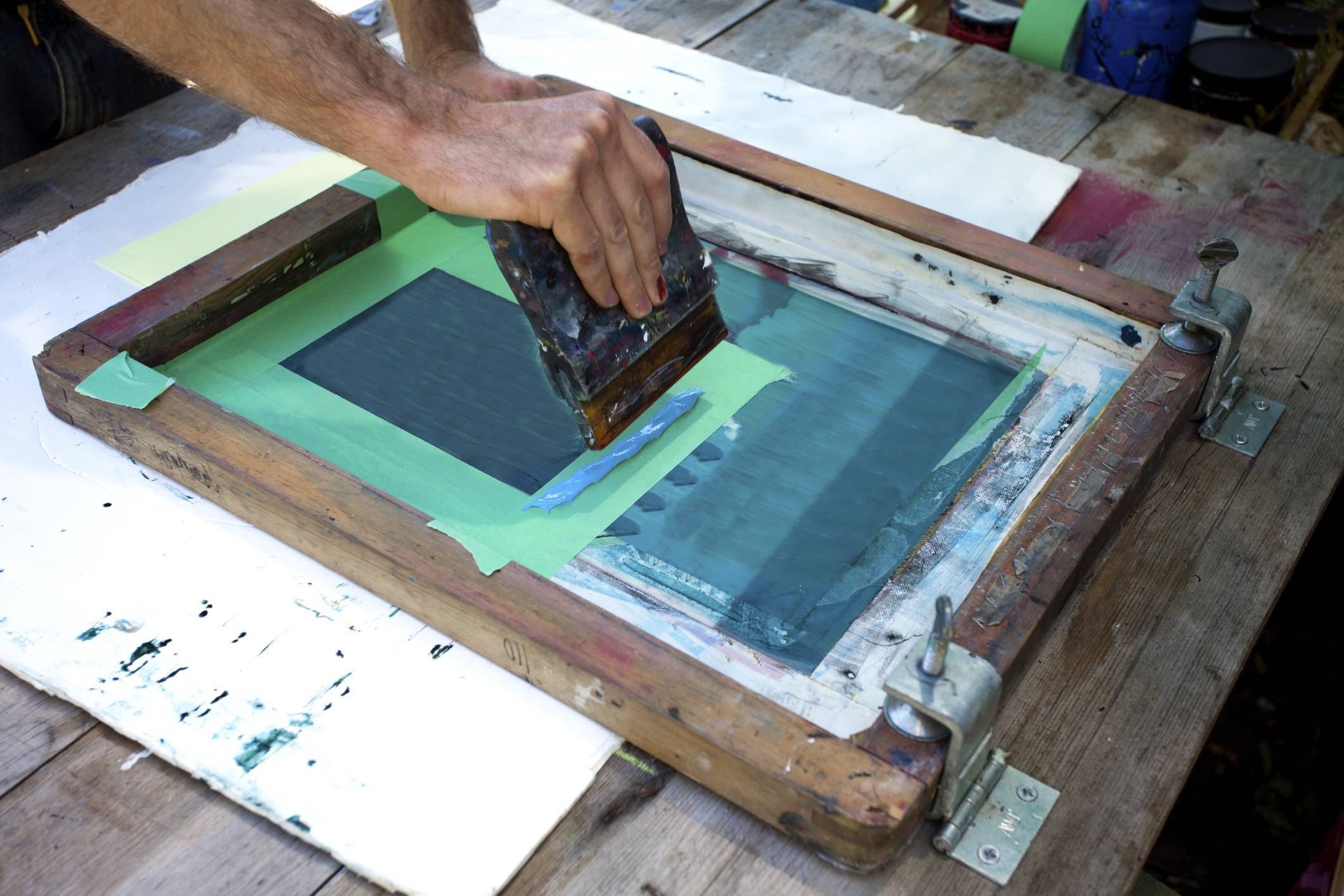The Essential Overview to Recognizing Screen Printing and Its Versatile Makes use of
Screen printing has a rich background that goes back to old times, developing right into an advanced strategy used across different markets today. This guide checks out the complexities of the screen printing process, describing its applications in style, home, and advertising and marketing style - 10:9 Design near me. Recognizing these fundamentals can open imaginative capacity for both imaginative and business projects. The adhering to areas will expose essential tips and techniques to enhance one's screen printing ventures
The History of Screen Printing
Screen printing has origins that trace back centuries, its advancement shows the technical and creative developments of numerous cultures. Stemming in old China, the method was originally made use of for enhancing textiles and later spread to Japan, where it became integral to Ukiyo-e woodblock printing. The approach moved to Europe in the 18th century, where it acquired popularity among artisans and business printers. The creation of photo solution in the 20th century reinvented screen printing, enabling for more elaborate designs and higher efficiency. Musicians like Andy Warhol additionally moved its popularity, making use of the tool to create legendary works that combined commercialism and art. By the late 20th century, screen printing had actually developed itself as a flexible strategy, employed in style, marketing, and art. Today, it continues to develop, integrating digital technology and broadening its applications throughout different sectors.
The Screen Printing Refine Explained
Screen printing transforms creative visions right into substantial designs with a series of exact steps. An image is developed and after that transferred onto a screen, usually made of fine mesh textile extended over a frame. A light-sensitive emulsion is put on the screen, which is revealed to light, setting in areas not covered by the photo. After washing out the unhardened emulsion, a stencil is developed.
Next off, the screen is positioned over the substratum, whether it be material, paper, or an additional product. Ink is after that pressed through the open areas of the stencil using a squeegee, transferring the design onto the substrate below. This process can be repeated for several colors, requiring separate displays for each hue. The published product is treated making use of warmth to assure the ink sticks appropriately, resulting in a long lasting, dynamic design all set for usage.
Sorts Of Screen Printing Techniques

Additionally, specialty techniques, such as discharge screen printing, get rid of dye from the fabric to produce softer prints, while foil screen printing applies metal aluminum foil to accomplish a glossy coating (10:9 Design Screen Printing). Each strategy offers unique qualities, satisfying numerous imaginative requirements and production scales, inevitably increasing the possibilities within the screen printing domain name
Applications of Screen Printing in Numerous Industries

In addition, the signage and marketing markets use screen printing for producing attractive display screens and banners. This method enables vibrant shades and detailed styles that capture interest. In electronics, screen printing is utilized for using conductive inks to circuit card, vital for element connections. The home décor industry welcomes screen printing to generate unique layouts on textiles and wall art. Generally, screen printing acts as an essential tool throughout diverse areas, enhancing items with individualized and visually enticing graphics.
Tips for Effective Screen Printing Projects
While taking on a screen printing project, mindful interest to detail can considerably boost the last end result. Initially, picking top quality materials is crucial; this includes the screen, inks, and substratums. Making use of proper mesh counts can impact ink deposition and information resolution. Prep work is similarly crucial; extensive cleaning of displays and proper exposure times assure crisp prints.
Next off, precise registration is essential for multi-color prints. Utilizing positioning tools can help attain exact layering. In addition, testing prints on scrap products before manufacturing aids recognize prospective concerns without wasting sources.

Frequently Asked Questions
What Products Are Finest for Screen Printing on Textile?
Cotton and polyester blends are excellent for screen printing on textile due to their resilience and ink absorption. Additionally, specialty fabrics like silk or canvas can create special textures and surfaces, improving the overall design top quality.
Just how Do I Tidy and Maintain Screen Printing Equipment?
To maintain and clean up screen printing equipment, one need to on a regular basis clean displays with appropriate solvents, examine squeegees for wear, lube moving components, and store all products in a dry, dust-free setting to prolong their life click here expectancy.
What Are the Ecological Influences of Screen Printing?
Screen printing can have substantial ecological influences, including chemical waste from inks and solvents, water use throughout cleaning processes, and power consumption. Environment-friendly materials and sustainable methods are crucial for reducing these adverse effects.
Can Screen Printing Be Done at Home Efficiently?
Screen printing can be properly done at home with the right products and techniques. Enthusiasts can develop high quality prints, though success relies on their ability degree, devices, and understanding of the process involved.
What Are the Prices Connected With Starting a Screen Printing Organization?

Starting a screen printing company entails costs for equipment, products, and work area. Preliminary expenditures typically range from a couple of hundred to a number of thousand dollars, depending upon the range, quality of equipment, and preferred manufacturing ability.
Screen printing has an abundant background that dates back to old times, advancing right into an advanced method made use of across numerous markets today. An additional strategy, rotating screen printing, utilizes cylindrical screens, facilitating continuous printing on textile rolls, thereby improving performance for large manufacturings. Furthermore, specialty methods, such as discharge screen printing, eliminate color from the textile to develop softer prints, while aluminum foil screen printing applies metallic aluminum foil to attain a glossy finish. In the style industry, screen printing is extensively made use of to develop dynamic layouts on clothing, allowing brand names to display their special designs. Cotton and polyester blends are suitable for screen printing on material due to their toughness and ink absorption.